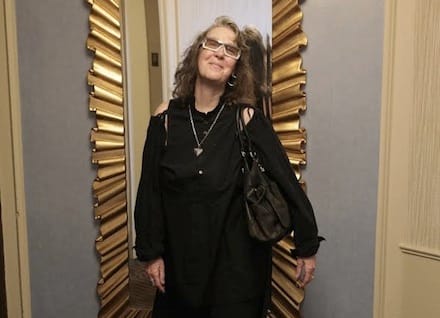The Rural We: Francine Hunter McGivern
Francine Hunter McGivern is an artist whose work will be featured in a retrospective at Hudson Hall beginning July 14, 2018.

Francine Hunter McGivern is an artist whose work will be featured in a retrospective at Hudson Hall beginning July 14, 2018.

Francine Hunter McGivern’s body of work and personal history is complex and compelling, scandalous and mercurial, edgy but warm. McGivern’s archive of artistic work, in many forms, will soon be on display as a retrospective at Hudson Hall opening July 14. Her prolific archive spills through the Hall’s galleries, weaving a story about a life lived open and free. Work on display travels through Manhattan’s 1970’s conceptual art and club scenes, the AIDS epidemic, pastoral Italy, and up here to the Hudson Valley where McGivern created opportunities for scores of artists at her five-year CR10 Project. CR10 is now the Frank Institute, a non-profit cultural center in Linlithgo, New York dedicated to fostering interdisciplinary creativity. McGivern holds nothing back in her retrospective… or in life.
I was exposed to the conceptual cutting-edge progressives in the arts in the mid ‘70s. It was pre-performance art. Performance at the time had an intellectual-philosophical kind of merger. Now, unfortunately, everything has been split into categories.
I started my own company called Jungle Red Studios in 1977. I sort of was a child of Andy [Warhol] and it was art imitating life. In many ways The Factory was everything for me. You get the money from this or that and then you get to do whatever you want with the money. So I started the studio. I knew I needed a license for something (a license to kill) so I got a hair-dressing license. I’d never been to a hairdresser in my entire life. So I had this bordello in the daytime and at night I started producing club shows.
There’s a lot in the archive that you’ll see in the exhibition that relates to Jungle Red and the period and the integration and the collaboration and documentation and all of the kind of dimensions around what that was.
The last time I performed live was in 1988, which you’ll see in the show — it’s a classic burlesque I did in three acts with three male strippers and a magician. Very old school. My husband Daniel Rothbart (who I’ve been with for 21 years) just finished this really good edit of the old footage.
The first person I knew who died of AIDS died in 1980. By 1988 I’d lost so many, many people. It was a changing time for those of us on the cutting edge of underground culture. The loss was immeasurable. So by the end of that year I closed Jungle Red to the public.
I moved to Italy from 1989 to 1997. I had gone on a vacation there just to sort of remember what it was like to have a lot of fun and not be around sick and dying people.
I met an incredible man who had a beach club that was kind of the cool hotspot at the time for Warhol and Italian filmmakers. He was 70, I was 39. I was with him for nine-and-a-half years. It was beautiful there in the foot of Vesuvius. That time was a gift from all of the people above who I lost. They put me over there. All those people are here. You’ll see them in the show.
Because of that my practice changed. I was so inspired by the landscape. And I had always been grounded in metaphysics and I’d spent a lot of my life studying the hermetic and the occult and I became Buddhist when I was 27. So I really focused on that in my work starting in the late ‘80s through today.
One of the cool things about looking back over 40 years of work was trying to find a weave between all I’ve made. Do I see it? Pulling it all out and trying to blend it into this beautiful opportunity that they’ve given me at Hudson Hall has been a wonderful opportunity to try to do and make an experience so the viewer can feel we are all one in the best way.